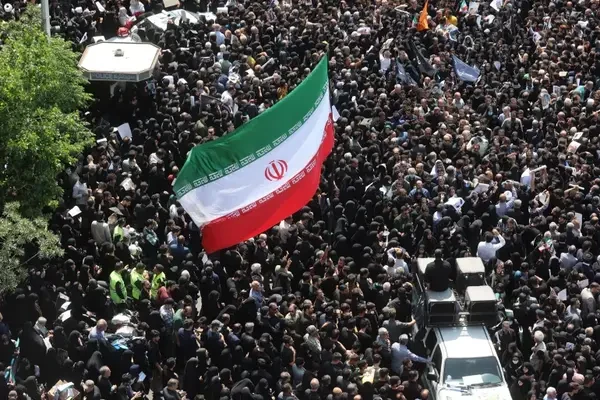Iran’s Plan to Strike Back Against the U.S.
Iran’s Military Preparations Following U.S. Attacks
Loading...

Who is permitted to run will be crucial in determining whether the political elite aim to govern the country or simply manage ongoing crises.
Iran is approaching a significant moment with a snap presidential election on June 28, prompted by the recent death of President Ebrahim Raisi in a helicopter crash. This election could provide insights into the future direction of the country, particularly whether the political elite are willing to ease internal tensions and engage more with the world or continue on a confrontational path.
Iran's recent history has been marked by contrasts between hope and despair, tradition and modernity, and conservatism and reformism. This election, brought about by an unexpected event, will indicate whether the Iranian establishment seeks governance and normalization or will continue to manage crises.
Beyond the Supreme Leader
Iran’s political system, established after the 1979 Islamic Revolution, is based on the concept of Velayet-e Motlaqaye Faqih, or the absolute guardianship of the Islamic jurist. The supreme leader, currently Ayatollah Ali Khamenei, holds ultimate authority over state affairs. However, power is not monopolized; other significant power centers include the legislature, judiciary, executive, assemblies, and councils.
These layers of governance, such as the Guardian Council and the Expediency Discernment Council, often act as parallel structures, influencing key decisions, particularly in areas like national security and nuclear policies. The Islamic Revolutionary Guard Corps (IRGC), an elite armed force, also wields considerable influence over Iran’s politics and regional strategies.
Leading the Presidential Race
Several prominent figures have entered the presidential race. Ali Larijani, a moderate conservative, is seen as a strong candidate if reformists participate in the vote. Larijani, with his pragmatic approach and significant political background, could appeal to both conservatives and reformists. His candidacy might indicate a willingness to re-engage with the West on nuclear negotiations.
Saeed Jalili, a hardline conservative and former nuclear negotiator, represents a different path. With strong ties to the supreme leader and the Revolutionary Guards, Jalili's presidency would likely continue Raisi’s policies. His success would depend on a low turnout, indicating reformists' abstention from the election.
Mohammad Bagher Ghalibaf, the current speaker of parliament, and Eshaq Jahangiri, a prominent reformist, are also noteworthy candidates. Ghalibaf, with his extensive ties to the IRGC, is seen as a strong contender, while Jahangiri’s chances hinge on mobilizing reformist voters to counter a potential Jalili victory.
Election Turnout and Legitimacy
Turnout will be crucial in this election. High participation rates have traditionally conferred legitimacy on Iran’s political system. However, recent low turnouts and widespread anti-government protests indicate a significant portion of the population is disillusioned with the political process. The establishment will likely try to engineer a competitive race to encourage voter turnout and avoid a legitimacy crisis.
In conclusion, while the presidential election will offer some insights into Iran’s future direction, the entrenched political system means that fundamental changes are unlikely. The real power remains with the supreme leader and the IRGC, and the candidates permitted to run will ultimately align with the existing structure of the Islamic republic.
Editor
Iran’s Military Preparations Following U.S. Attacks
Troops remain in five strategic locations, raising fears of renewed tensions and long-term occupation.
Opposition forces have taken control of the capital after a significant offensive. Here is how it unravelled.
